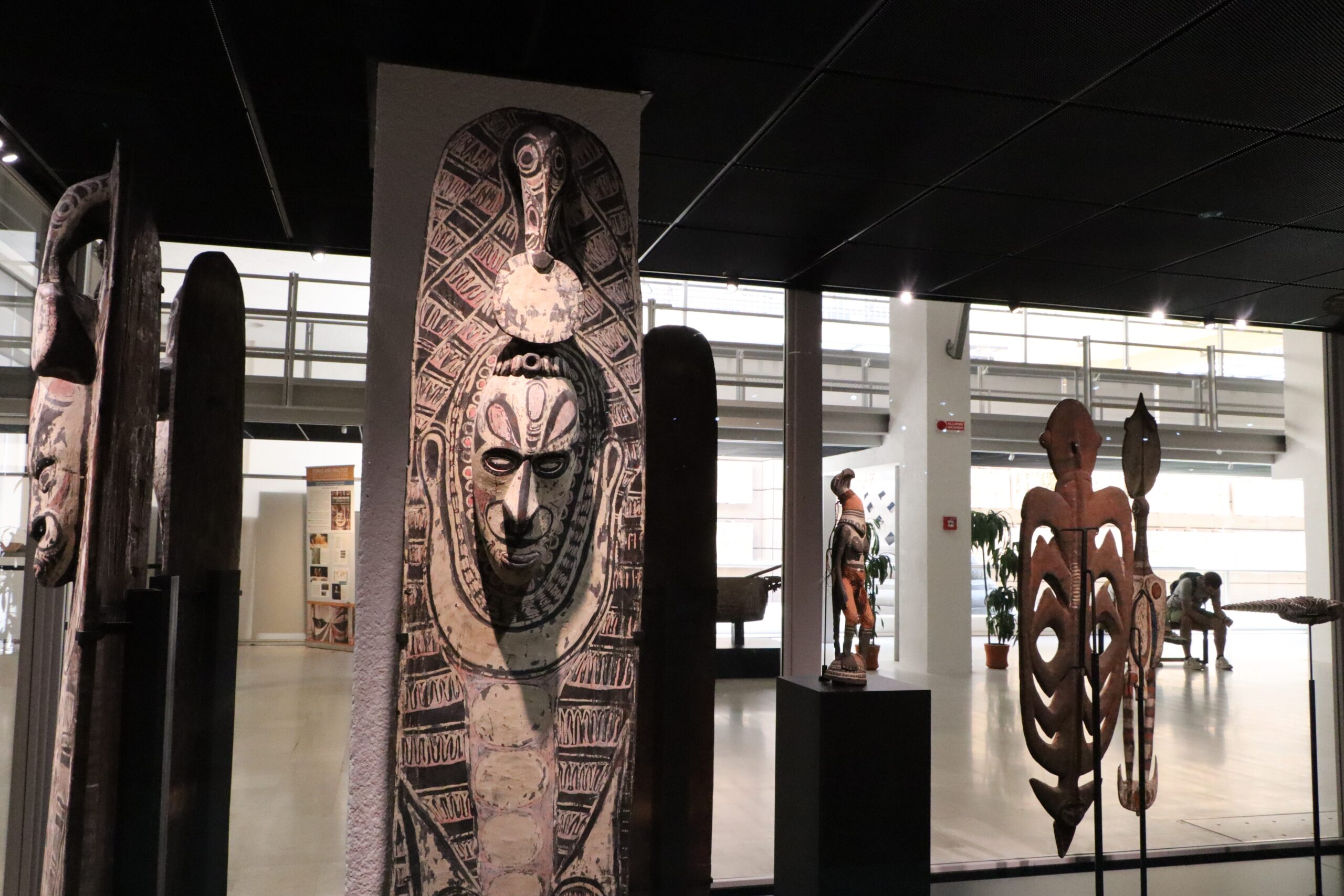It took 100 years, but the Vatican has finally agreed to surrender a kayak and other cultural artifacts that it stole from indigenous Canadian tribes for use in Pope Pius XI’s “Vatican Missionary Exposition” in 1925.
Members of the indigenous Inuvialuit nation are understandably annoyed that Pope Leo XIV, in announcing the return of the kayak, called it a “gift” that the Vatican is giving to them. “It’s not the Pope’s kayak,” said a spokesperson for the Inuvialuit tribes.
Is the Vatican holding Jewish property, too? Questions have been raised over the years about whether the Vatican has in its possession any sacred Jewish vessels that the Romans stole from the Second Temple in Jerusalem in 70 CE.
The Vatican denies it has any such Jewish objects, although there are some eyewitness accounts to the contrary. In addition, scenes of the menorah and other Jewish property being carried off are depicted on the Arch of Titus, in Rome—the ancient equivalent of photographic evidence.
In any event, there is no denying that another government seized large amounts of Jewish property in the 1950s and may still be holding some of it—the government of Jordan.
The Jordanian regime stole, destroyed or otherwise desecrated an estimated 38,000 gravestones from the Mount of Olives cemetery in Jerusalem, when Jordan illegally occupied parts of the city from 1948 to 1967.
First Nations, Inuit and Metis delegates are touring the Vatican Museums now to see some of the Indigenous cultural belongings in possession, including this rare kayak (said to be one of 5 of its kind in the world) from Inuvialuit. Photo supplied. pic.twitter.com/eNuzS159ym
— Olivia Stefanovich (@CBCOlivia) March 29, 2022
The 3,000-year-old site is the oldest and largest Jewish cemetery in the world. Among those buried there are the biblical prophets Haggai, Malachi, Zechariah, and Hulda; Talmudic sages as well as more contemporary rabbinic leaders such as Rabbi Chaim ibn Attar (better known as the Or Ha-chaim) and Chief Rabbi Avraham Yitzhak Hakohen Kook; and modern luminaries, including Prime Minister Menachem Begin and Hadassah founder Henrietta Szold.
On July 5, 1967, just weeks after the Six Day War and the liberation of Jerusalem, the Jewish Telegraphic Agency reported the discovery of what it called “one of the most shocking reported episodes of the 19-year occupation by Jordan of Mount of Olives Cemetery.”
Israeli officials found that “tombstones from the historic burial ground had been used in the construction of an Arab Legion camp near Jericho,” the JTA reported. “Tombstones carted from the cemetery [were] used for the main parade ground, roads, buildings, and even the lavatory structure. Inscriptions were still visible on the desecrated stones…”
American Jewish journalist Trude Weiss-Rosmarin, who visited the Mount of Olives later that year, reported that “the Jordanians’ full fury was unleashed upon the dead.” Tombstones were carted away to be used after being cut, in the building of houses, or ground into gravel in road construction. Many sections of the cemetery were plowed up, either to lay a new road or just for the sake of desecration. Among the tombs completely obliterated was that of Henrietta Szold.”
1948-1967: 38,000 Jewish headstones on the Mount of Olives cemetery were destroyed by Arabs. Arabs used Jewish headstones to build walls and roads in Jerusalem during Jordan's illegal occupation. You are horrible people. Horrible!! Jews never would ever do this!! pic.twitter.com/nb0dol5bl8
— Mimi (@MiriamL99472550) April 16, 2023
It’s time for the Jordanian government to provide a full accounting of the gravestones it “carted away” from the Mount of Olives; some may still be in Jordan’s possession. In addition, the Jordanian regime needs to pay restitution to the families of those whose graves it desecrated. And Jordan needs to publicly apologize for the crimes it committed against the Jewish people.
There is ample precedent for insisting on restitution for damage to Jewish cemeteries. In 2014, the city of Warsaw returned and restored some 1,000 Jewish gravestones that had been stolen from the Brodno Jewish cemetery during the Holocaust. Jewish tombstones that had been fashioned into stairs in a church in Vilnius, Lithuania, were dislodged and returned to a nearby Jewish cemetery in 2022. And earlier this year, hundreds of pieces of Jewish tombstones were returned to the cemetery in Brest, Belarus, from which they had been stolen decades earlier.
As compensation for their role in destroying Jewish cemeteries during the Holocaust, Germany and Austria today pay part of the maintenance costs for a number of Jewish cemeteries in Central Europe. Each country also contributes $1.1-million annually to a fund for guarding Jewish cemeteries.
Jewish leaders have shown that they know how to press for restitution of Jewish property, even if the process is slow. The passage of time should not relieve Jordan of its legal, financial, and moral responsibilities.
For decades, Swiss banks refused to pay the families of Jews whose accounts were seized during the Holocaust. It took half a century of Jewish protests before the Swiss finally agreed, in 1999, to pay up.
France was extremely slow about returning Jewish-owned paintings that had been stolen by the Nazis. Only a few dozen were returned during the first fifty years after the Holocaust. It took many years of protests and pressure before the French government finally, in 2013, established a commission to address the problem.
And Jewish organizations are still working to persuade the governments of Poland and Lithuania to pay full restitution for Jewish property seized there during the Holocaust.
The problem of the stolen or destroyed Jerusalem gravestones should not be forgotten. Seventy-six years is a long time for an injustice to continue. But that’s still less time than it took the Pope to hand over that stolen kayak. There is no reason for Jewish leaders to be any less persistent than the indigenous Canadian tribes have been.
(Dr. Medoff is the founding director of The David S. Wyman Institute for Holocaust Studies and author of more than 20 books about Jewish history and the Holocaust. His latest is The Road to October 7: Hamas, the Holocaust, and the Eternal War Against the Jews, published by the Jewish Publication Society & University of Nebraska Press.)




